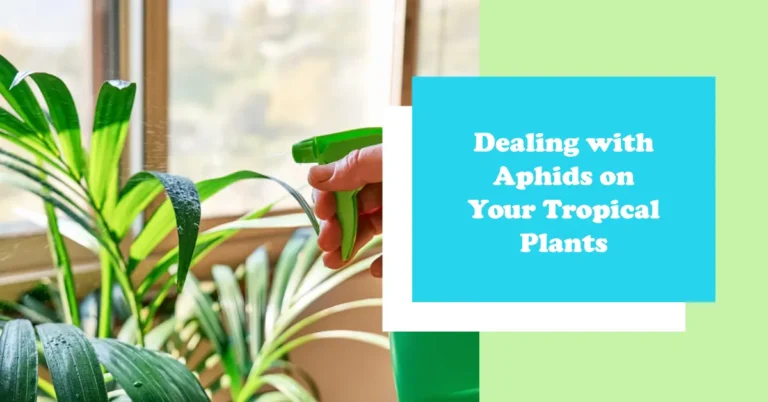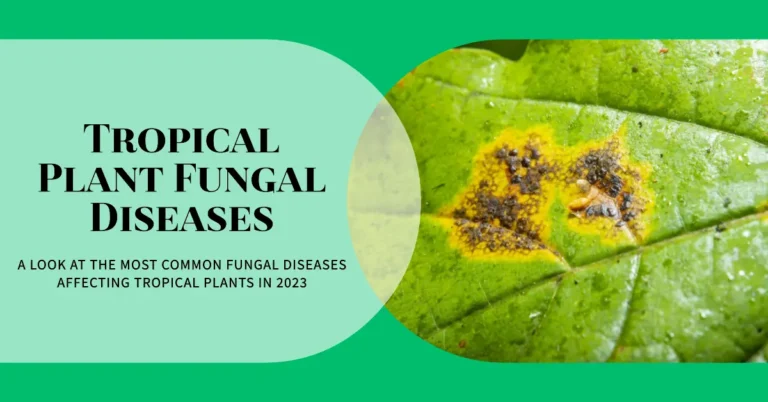Fertilizing Palm Trees
Fertilizing Palm Trees: Meeting the Nutritional Needs of Your Palm
Just like all plants, palm trees require balanced nutrition to flourish. Understanding what goes into fertilizing palm trees correctly can be the key to seeing them thrive in your environment.

Macronutrients: The Building Blocks
Essential Elements
- Nitrogen (N)
- Phosphorus (P)
- Potassium (K)
These are the primary ingredients found in most fertilizers, vital in promoting healthy leaf growth, robust root development, and the overall vitality of your palm tree.
Micronutrients: Supporting Healthy Growth
While needed in smaller quantities, micronutrients play a crucial role in effectively fertilizing palm trees.
Important Micronutrients
- Magnesium
- Manganese
- Iron
- Copper
A deficiency in any of these can lead to yellowing leaves or stunted growth – common challenges many palm owners face. Hence, it is vital not just to feed your palm but to nourish it with the right nutrients.
Watering: More Than Just Quenching Thirst
While palm trees do love a good dose of sunshine and water, overwatering can lead to nutrient loss. Being vigilant about your watering practices is thus crucial when it comes to fertilizing palm trees.
Choosing the Right Fertilizer for Your Palm Tree
Navigating the world of palm tree fertilizers can be challenging, given the myriad options available. However, knowing the essential nutrients can make this task less daunting.
Primary Nutrients
- Nitrogen (N)
- Potassium (K)
- Magnesium (Mg)
These are indispensable in ensuring your palm tree’s healthy growth and development. So, while choosing a fertilizer, make certain that these elements are present in significant quantities.
Fertilizer Ratios: Getting It Right
Ideal Ratios
- 3-1-3
- 15-5-15
This ratio represents the amount of Nitrogen, Phosphorus, and Potassium (N-P-K) present in the fertilizer. It’s recommended to have about three times more nitrogen and potassium compared to phosphorus. Additionally, look out for secondary nutrients like calcium, magnesium, and iron.
Slow-Release Fertilizers: A Sustainable Choice
A pro-tip for fertilizing palm trees is to opt for slow-release fertilizers. These fertilizers ensure a steady release of nutrients over several months, reducing the risk of nutrient burn and saving you from the hassle of frequent reapplications.
When to Fertilize Your Palm Tree: Timing Matters
Fertilizing palm trees is as much about when as it is about what you use. Understanding your palm tree’s growth cycle and environmental demands can help in choosing the right time to fertilize.
Spring: A Time of Renewed Growth
Spring emerges as the best season to start fertilizing palm trees. This is when they kick-start their active growth phase, demanding additional nutrients that are absorbed more efficiently.
Summer: Continuing the Nourishment
However, the fertilizing regime shouldn’t stop with spring. Continuing to nourish your palm trees through the summer supports ongoing growth and strengthens the tree’s defenses against disease and pests prevalent during warm weather.
Conclusion
As you dive into the world of fertilizing palm trees, remember moderation is key. Over-fertilizing can be detrimental, causing nutrient burns and damaging the delicate root systems. Always adhere to product guidelines to ensure your palm tree gets the nutrition it needs to thrive.
I hope this resonates with what you’re aiming for. It retains much of your original content while emphasizing the SEO keyword seamlessly.
Step-by-Step Guide to Applying Fertilizer
So, you’ve got your fertilizer, and you’re ready to give your palm tree the nutrients it needs. But how do you go about it? The first step is simple: water your palm tree thoroughly a day before applying the fertilizer. This ensures that the soil is moist enough to absorb all those wonderful nutrients without causing any damage or burning to the roots.
Next up, let’s talk distribution. You’ll want to spread the fertilizer evenly around the base of your palm tree – think of an imaginary circle with its edge at least two feet away from the trunk. Be careful not to get too close! Now, using a garden spade or something similar, gently mix in this nutrient-rich goodness into top one inch of soil so that rain doesn’t wash it away.
And there we have it! Your palm has been fed some much-needed food for growth. However, don’t rush off just yet – remember to water again lightly but thoroughly after fertilizing. This helps dissolve and distribute those nutrients further down in soil, ensuring they reach as many roots as possible!
Common Mistakes to Avoid While Nourishing Your Palm
One of the most common mistakes palm tree owners make is overwatering. Palms, like any other plant, need a certain amount of water to survive. However, too much water can lead to root rot and other diseases that could potentially kill your tree. It’s essential to understand the specific watering needs of your palm species and adjust accordingly. For instance, while some palms may thrive in moist soil conditions others might prefer slightly dry soil.
Another prevalent mistake is incorrect fertilization practices. While it’s true that palms require nutrients for growth and development, an excess or deficiency of these nutrients can be detrimental to their health. Many gardeners tend to use high-nitrogen fertilizers, which results in lush green foliage but weakens the tree’s overall structure, making it susceptible to disease and pests. Neglecting micronutrients such as magnesium or iron often leads to yellowing fronds and stunted growth.
Lastly, improper pruning techniques pose another significant threat to palm trees’ well-being. Over-pruning damages healthy fronds and exposes the trunk, making it vulnerable to harsh weather conditions and pest invasion. Always remember, less is more when pruning – remove only dead or diseased fronds, leaving ample greenery for photosynthesis. Also, sharp, clean tools are mandatory during this procedure, preventing any potential spread of disease from one part of the tree to another.
Continuing with the common mistakes palm tree owners make, improper placement of the palm is another key area where many individuals falter. Palms have specific light and temperature requirements that must be met for healthy growth.
• Some palms prefer full sunlight exposure, while others thrive in partial shade. It’s important to research your specific species’ light needs before deciding on its location.
• Temperature plays a significant role, too – some palms can tolerate cold conditions, but most are tropical or subtropical and require warmer climates to thrive.
Another mistake often made by palm owners is neglecting pest control measures. Pests such as scale insects, mealybugs, and spider mites can cause severe damage if not checked regularly.
• Regular inspection of your palm for signs of pests is crucial – look out for discolored patches on leaves or a sticky residue that could indicate an infestation.
• Use organic pesticides whenever possible, as harsh chemicals can harm beneficial organisms living in the soil around your tree.
Lastly, over-potting or using inappropriate soil mixtures is a common error committed by many gardeners. Palm trees need well-draining soil to prevent waterlogging and root rot.
• Choose pots that provide ample room for roots without being excessively large; this helps maintain proper moisture levels within the pot.
• The right soil mixture should contain equal parts sand, peat moss, and bark chips (or perlite), providing good drainage yet retaining necessary nutrients.
In conclusion, avoiding these common mistakes will help ensure your palm thrives – remember, each species has its own unique set of care requirements so do adequate research before
Organic vs. Synthetic Fertilizers: Which is Better for Your Palm?
When it comes to nourishing your palm tree, there’s a whole world of fertilizers to choose from – and the debate between organic versus synthetic is one that has gardeners divided. Organic fertilizers are derived from natural sources such as compost or manure, while synthetic options are chemically manufactured. If you’re an eco-conscious gardener, you might lean towards organic choices due to their environmentally friendly properties. They release nutrients slowly over time, reducing the risk of nutrient runoff into waterways and promoting healthy soil microorganism activity.
On the other hand, synthetic fertilizers have their own set of benefits. They provide immediate nutrition for your palm tree since they’re highly soluble and can be quickly absorbed by plant roots. This makes them an excellent choice if your palm is showing signs of nutritional deficiencies and needs a quick pick-me-up! Plus, unlike organic alternatives, which can vary in nutrient content depending on their source material, synthetics offer consistent nutrient ratios every time.
However, it’s important not to get too caught up in the ‘organic versus synthetic’ debate when choosing a fertilizer for your palm tree. The best option really depends on factors like the specific nutritional needs of your palm species or its current health status. For instance, palms suffering from severe deficiencies may benefit more from immediate-release synthetic products initially before transitioning back to slower-release organics once they’ve recovered some strength.
Monitoring the Health of Your Palm Post Fertilization

After you’ve given your palm tree a good dose of fertilizer, it’s essential to keep an eye on its health. Changes in the color and texture of the leaves can indicate how well your tree responds to fertilization. For instance, yellow or brown leaves could mean that your palm isn’t getting enough nutrients or perhaps too much of them. On the other hand, vibrant green fronds are usually a sign that your palm is thriving.
It’s also crucial to monitor growth rates post-fertilization. A healthy palm should show steady growth over time – if you notice slowed or stunted growth, it might be worth revisiting your fertilizing routine or consulting with a professional arborist. Similarly, excess growth can indicate over-fertilization, leading to nutrient burn and damaging the plant in the long run.
Aside from physical indicators like leaf color and growth rate, pay attention to any changes in overall vigor or resilience as well. Palms that are properly nourished will typically have a robust defense against pests and diseases, while those lacking vital nutrients may become more susceptible to such issues. So remember – feeding your palms isn’t just about promoting lush foliage; it also plays an integral role in their overall well-being.
Troubleshooting Common Palm Tree Fertilization Issues
There’s nothing more disheartening than seeing your beloved palm tree looking less than lush. One of the most common issues you might encounter is yellowing or browning leaves, which can be a sign of over-fertilization.
This happens when there are too many nutrients in the soil, and it causes a chemical burn on the roots, leading to unhealthy foliage. It’s like eating too much junk food – it might taste good at first, but eventually, it takes its toll on your health.
Another problem that often pops up is nutrient deficiency. You could be fertilizing regularly but still find your palm tree looking lackluster if you’re not using the right kind of fertilizer. Palms need a balanced diet, just like us humans! They require specific amounts of macronutrients such as nitrogen (N), phosphorus (P), and potassium (K), along with essential micronutrients, including magnesium (Mg), manganese (Mn), and iron (Fe). If any one these elements are lacking in the soil, it can lead to deficiencies that manifest in various ways, such as stunted growth or leaf discoloration.
Fret not, though. These problems are totally fixable once identified correctly. For instance, if you’ve been overdoing it with feeding your palm tree, simply cut back on fertilization for some time until new healthy growth appears. On the other hand, if certain nutrients are missing from your fertilizer mix or aren’t being absorbed effectively due to incorrect pH levels in the soil – consider switching to a specialized palm fertilizer or adjusting soil pH accordingly.
Maintaining Your Palm Tree: Beyond Just Fertilization
While fertilization is a key part of maintaining the health and vibrancy of your palm tree, it’s not the only thing you need to consider. Regular watering, for instance, plays an equally important role in your palm’s well-being. Depending on the species and climate conditions, most palms prefer deep but infrequent watering. This encourages their roots to grow deeper into the soil, which helps them withstand dry spells better. It also prevents waterlogging that can lead to root rot.
Pruning is another essential aspect of palm tree maintenance. However, contrary to popular belief, less is more when it comes to trimming your palm tree. Over-pruning can weaken your tree and make it susceptible to diseases or pest attacks, while under-pruning could result in a messy appearance with dead fronds hanging around unnecessarily. The golden rule here is only prune yellowing or completely brown fronds, as green ones contribute significantly towards photosynthesis.
Lastly (but certainly not least), keep an eye out for any signs of disease or pest infestation on your beloved palm trees! Early detection often means easier treatment and higher chances of survival for the plant itself. Common symptoms include wilting leaves, discolored spots on fronds, or trunk lesions – all these may indicate potential issues such as bacterial wilt or bug invasions like scale insects and mealybugs.
Useful Tips for Palm Tree Care and Fertilization Success

Caring for your palm tree goes beyond just understanding its nutritional needs and choosing the right fertilizer. It’s also about knowing how to apply that care effectively. For instance, when watering your palm, make sure you don’t overdo it. Too much water can lead to root rot, a common issue with palms. Instead, aim for deep but infrequent watering sessions that encourage the roots to grow deeper into the soil.
Another important tip involves pruning or trimming your palm tree. This isn’t something you should do too often, as palms typically shed their leaves naturally. If you notice dead or yellowing fronds, though, feel free to trim these off at any time of year because they could be draining energy from the rest of the plant. However, always remember not to cut off more than what’s necessary, as this could stress out your tree.
Lastly, let’s talk about protecting your beloved palm from pests and diseases – a crucial yet often overlooked aspect in caring for palms! Regularly inspect your tree for signs of trouble like discolored leaves or unusual growth patterns; early detection makes treatment easier and more effective! Also, consider using natural pest deterrents such as neem oil instead of harsh chemicals whenever possible – better for the environment and your beautiful palm.
FAQs
What are the nutritional needs of a palm tree?
Palm trees require a balanced diet of macronutrients like nitrogen, phosphorus, and potassium and micronutrients like iron, manganese, and magnesium.
How do I choose the right fertilizer for my palm tree?
The right fertilizer should contain a balanced mix of all the nutrients your palm tree requires. Look for a slow-release formula specifically designed for palm trees, as they require continuous nutrients over time.
When should I feed my palm tree?
The best time to feed your palm tree is during the growing season, which is typically from late winter through early fall. Fertilize every three months during this period.
How should I apply fertilizer to my palm tree?
Start by clearing the area around the base of the tree. Sprinkle the fertilizer evenly around the tree, avoiding the trunk. Water the area thoroughly to help the fertilizer absorb into the soil.
What are some common mistakes to avoid while nourishing my palm tree?
Over-fertilizing and under-fertilizing are two common mistakes. Also, avoid using a fertilizer that lacks the necessary nutrients or using it at the wrong time of year.
Is organic or synthetic fertilizer better for my palm tree?
Both have their advantages. Organic fertilizers improve soil health over time and are environmentally friendly, while synthetic fertilizers work quicker and are often less expensive. The choice depends on your personal preference and your tree’s needs.
How do I monitor the health of my palm tree after fertilization?
Look for signs of growth and healthy, green fronds. If the leaves turn yellow or brown or the tree shows no signs of growth, it may be a sign of inadequate fertilization.
What should I do if my palm tree has fertilization issues?
Try adjusting the amount or type of fertilizer you use. If problems persist, consider seeking advice from a local nursery or arborist.
Besides fertilization, how else can I maintain my palm tree’s health?
Regular watering, proper pruning, and protection from extreme weather conditions are also crucial for maintaining your palm tree’s health.
Do you have any other useful tips for palm tree care and fertilization success?
Testing your soil regularly can help you monitor its nutrient content and pH levels. Also, ensuring your palm tree is planted in a location where it has plenty of space to grow and isn’t exposed to harsh weather conditions can greatly increase its health and longevity.







